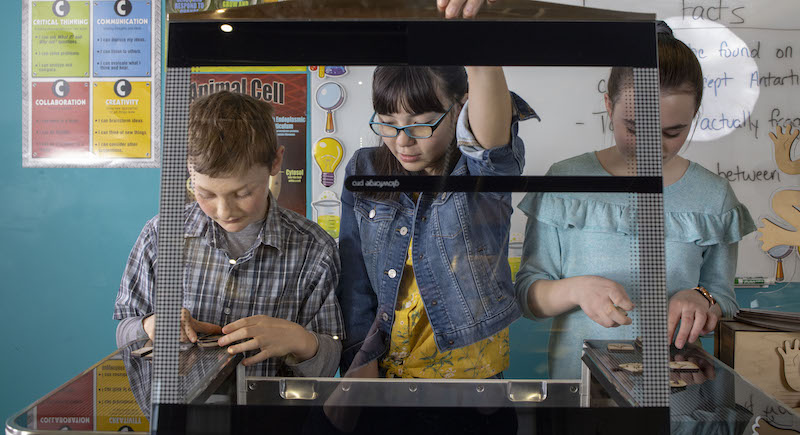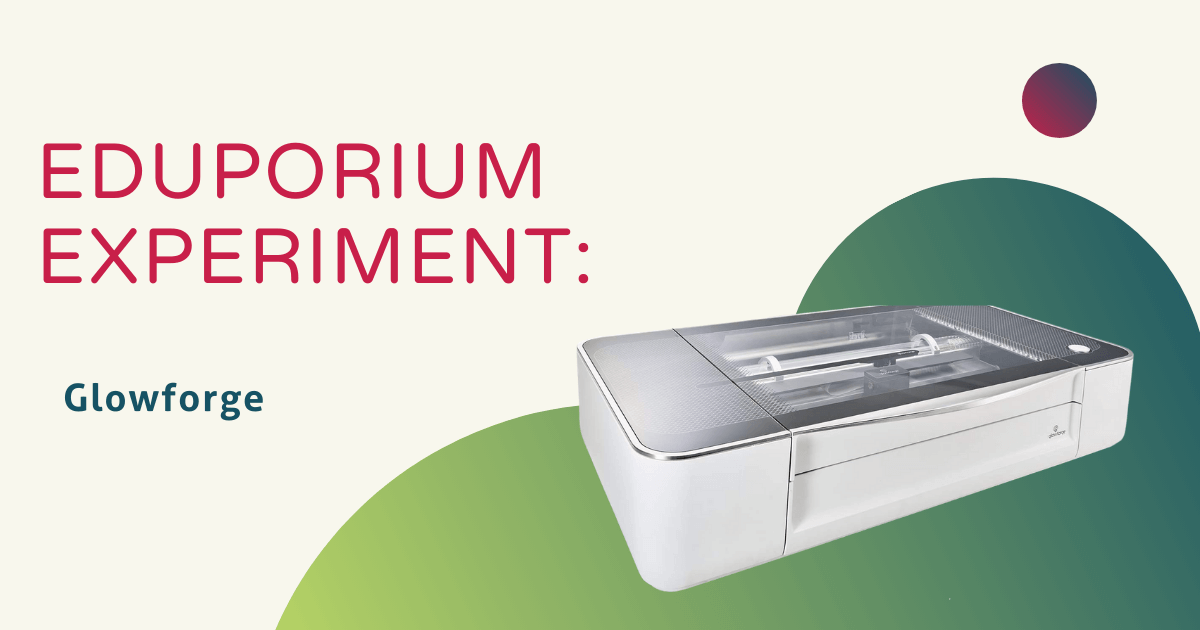In STEAM or maker education, 3D laser printing helps educators create incredibly unique and engaging opportunities for students to design and invent. More importantly, however, with these Glowforge 3D laser printers, they can experience real-world problem solving in the process. Whether with a Glowforge Pro or the Glowforge Plus, high school students can seamlessly translate designs into tangible products as they bring their ideas to life. Whether they want to print on paper, glass, hardwood, leather, metal, plywood, tile, cardboard, fabric, or even food, these 3D laser printers are extremely user-friendly and all of the Glowforge projects help amplify the Maker Movement in education.
Of course we're big fans of any STEM tools that can help enhance student engagement and increase real-world readiness whether that's as part of a makerspace curriculum or elsewhere. The Glowforge 3D laser printers certainly fit that bill by helping students explore the real-world implications of problem solving with technology. They also provide students with instant results in the MakerEd process, truly help to fill them with a sense of pride in their work, and bridge connections between art education and technology. And, for their power, the Glowforge price isn't bad at all. So, how could you incorporate a Glowforge printer as an educational asset in your classroom?
Using a 3D laser printer in education
Laser printing with the Glowforge machines can span all disciplines of STEAM learning. It allows students to design 2D models and translate them into a tangible object or decorative project. Though most common in engineering classes and prototyping, there are other academic areas in which your students could create Glowforge designs. As mentioned, students can use the Glowforge printers in art or makerspace projects as well. Whether it's for individual projects or community STEM initiatives, it's certainly a worthwhile option for creative design. The Glowforge team also has a robust education section on their site with examples of using the printers across subjects.
These resources, which come directly from educators, are super valuable when incorporating a Glowforge machine in school classrooms. We also know that easy implementation is important and compatibility with other technologies—mostly classroom computers—is something educators need. Also, the Glowforge app is web-based and students can access it using a browser. They just need to create a Glowforge account for accessing it. There was also, however, an iOS Glowforge app previously available for beta testing only. Students could use it on iPhones or iPads and they could upload design photos from their devices' photo library. It was unfortunately discontinued and no longer accessible.

The Glowforge design interface
So students wouldn't have to rely on the mobile app, the Glowforge team also provides the preferred web interface for digitally activating printing, cutting, and project designs. It is compatible with JPG, PNG, SVG, PDF, and some other file formats. Whichever one students use, they can create Glowforge-compatible files from different software programs, like Adobe Photoshop, Inkscape, Sketchup, and Autodesk360. Note that the browser-based app is the only Glowforge software they can use to design artistic pieces, however. In addition to the variety of compatible Glowforge materials, the machines can also:
- Cut: the laser moves at full power to cut its way through the material.
- Score: the laser moves at lower power to draw a line.
- Engrave: the laser moves quickly to create a picture on the material.
When students upload a design to the Glowforge web interface and input the printing material, they should have an idea of how they want their design to look on the material. If they'd want to draw it themselves, the machine can actually scan the design and upload it. For each design, students can select the material type they're working with. If their printing material has a barcode (like wood from a hardware store), for example, they can scan it and the machine will recognize the material and select the correct option from its extensive library. They can also manually change the material to whatever they need. Finally, for each element of their designs, students can choose which part to cut, engrave, or score.
The Glowforge project library and Air Filter
We love how the Glowforge project library is constantly expanding and how users share projects from all around the world. It's the perfect example of people in the maker community coming together and helping one another design innovative solutions. While browsing through the projects, we even stumbled on a high school math project that a student created. The objective was to choose and research an old mathematical instrument and create a deliverable on it. One student chose a sundial that William Oughtr created back in the 17th century. And, this is just one example of combining art and design with a STEM subject in math.

By using the Glowforge printers to cut the components and print the measurements, the student created a 17th century sun dial in the 21st century. There's a real sense of accomplishment when students not only learn about an instrument's history and mathematics, but also in creating a working object to support their learning. More importantly, using these two 3D laser printers is completely safe—thanks in large part to the Glowforge Air Filter. Available separately from the laser printers, these machines attach to them and filter the air in a classroom or makerspace while students use one of the Glowforge printers. This ensures the air quality remains safe to breathe and allows students to create anywhere in the school.
Adding some Glowforge printers to your school
These printers make great classroom additions, allowing students to experience multidisciplinary thinking, digital fabrication, and forming tangible representations of creativity. If you are interested in integrating any 3D laser printers in your classrooms, reach out to us for more information! To make a purchase or request a quote for a Glowforge printer or accessories, click below or search our store. Make sure you’re following us on Twitter and Instagram as well for all of our latest news and product announcements.







